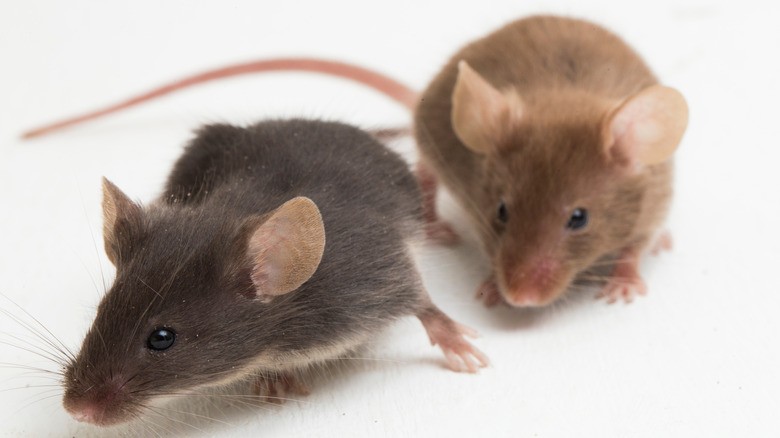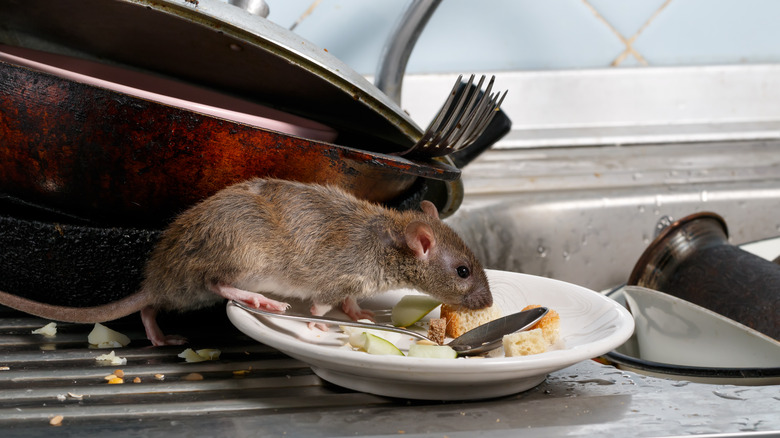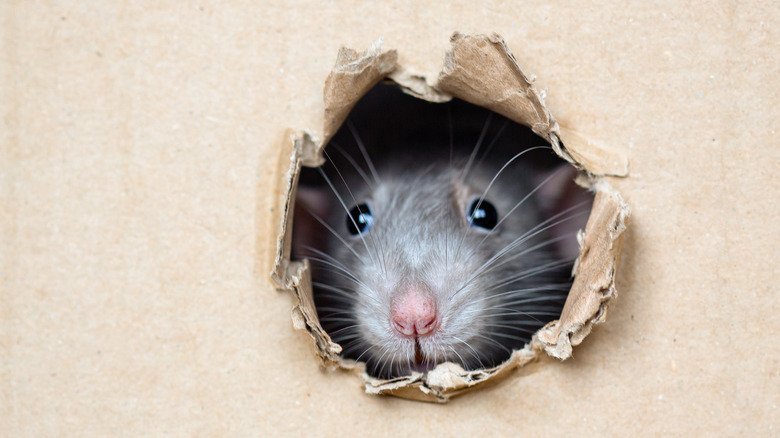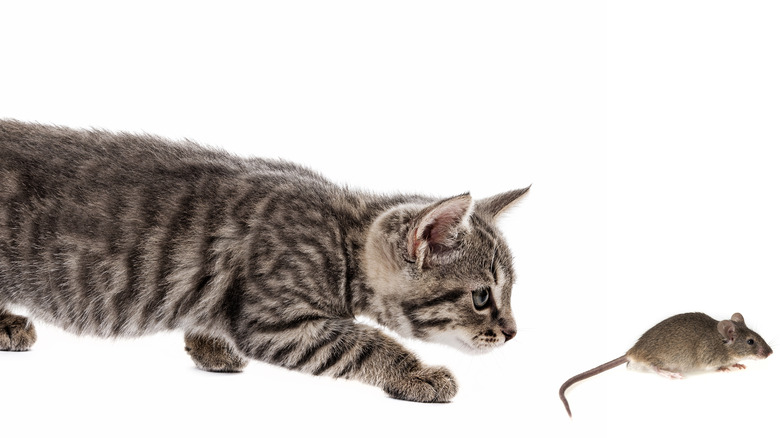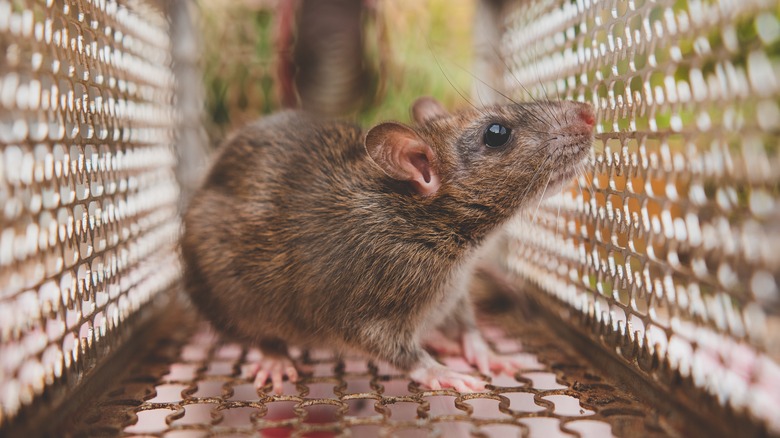How To Get Rid Of Rats Humanely
We may receive a commission on purchases made from links.
If you were this Chinese restaurant that recently lost $190 million in value to a rat or this ATM that got $20,000 bills in it shredded by a rat, you'd definitely wish that these toothy rodents never survived World War II. Notorious, smart, pesky, and havoc-wrecking are the words a lot of people who have had a share of the pain inflicted by these medium-sized mammals describe them with.
According to Live Science, rats originated in Asia and Australia in over 60 species varying in sizes, weights, habits, diets, and habitats. A report published on Terminix further revealed that the two major species of rats plaguing homes and stores in the USA are Norway rats and roof rats. Based on the report, the common signs of an infestation are the appearance of gnaw marks on items, frequent observation of squeaks, squeals, and scratches inside walls and furniture, and the incessant surfacing of rat droppings.
But while rats are not, in reality, good chefs as opposed to what the sensational movie "Ratatouille" portrays, they should never be treated with cruelty. To that end, we have created this post on how to get rid of rats humanely.
Put an end to the supplies
Have you ever stopped to ask yourself why your home is a target to these pests of destruction? Well, here's your answer: You are inviting them in. According to Midway Pest Management, rats want six things in your home, which are food, water, shelter, nesting materials, plants, and waste items. People who unknowingly leave these items around their properties quickly become landlords to the sneaky, pointy-tailed pest. However, Breda Pest Management recently suggested that through the adoption of good environmental management practices, homeowners can have a rat-free house.
These indoor/outdoor environmental hygiene tips can be found at the Safe Rodent Control Resource Center. Ultimately, you're advised to keep outdoor/indoor cooking areas clean always, avoid leaving your pet food lying around, use trash containers that have seals, and keep them covered. You should also keep your property bush-free and avoid growing ivy plants as rodents find shelter and food in them. By so doing, you're cutting their supply and sending those unwanted tenants an eviction notice in the language they understand.
Keep them out, ground them
The experts at Smith's Pest Management encourage homeowners to promptly carry out a keen inspection of their environments (both indoor and outdoor) in order to uncover potential and existing rat entries/exits as a way to keep these critters out of your inner sanctum. They said you should pay close attention to unwanted gaps in vents, drains, garage doors, and cracks/holes in the foundation.
Having located those cracks, holes, and unwanted gaps, Pro Active Pest Control advises that you seal them with quality rodent-proofing materials. In addition, you should also prune your trees timely to expose rodents that may be hiding there and trim overhanging trees or crawling plants that lean or nest on your roof, windows, doors, and other entry elements. That is how to eliminate outdoor access. And if you're up for a DIY weekend project, you can also build a 2-foot-wide wall of crushed rocks around sealed holes/cracks for fortification.
Introduce rat predators into your home
You can scare rats off with one of their natural predators, which also happens to make a great pet. Recently, a post published on PETA analyzed the high intellectual capacity of rats and mice, to which both owe their unusual survival abilities. This means that those hideous mammals are sometimes smart enough to evade static traps and bait. But all hope is not lost as there are other animals that are possibly smarter than rats. According to Skedaddle Humane Pest Control, the top natural predators of rats are cats, owls, hawks, snakes, and weasels.
Now, we know you're likely to opt for a cat when it comes to pets, but while a CNN post explains how the slightest scent of a cat can repel rats, another article published in The Star warns that some big rats aren't afraid of cats but in fact scare cats. The Atlantic also revealed that cats are no match for New York city's rats. Finally, it is hard to combat a serious rat infestation with just a cat. However, when dealing with a small population of medium/small-size rats, some of the best species of cats for catching mice and rats include Siberian, Persian, Chartreux, and Maine Coon, as told by Hepper. You can also opt to make your yard friendly to those other predators that can stop the rats before they enter your home.
Use humane rat traps
No one ever lives in harmony with rats except people who keep a few numbers of them as pets. Even if you think enduring the destructive activities of those rodents around your house is a price worth paying to promote an animal cruelty-free earth, it's never a good idea to endanger the lives of your family to any of the six dangerous diseases spread by rats and rodents.
But snap and glue rat traps, just like many other rat-killer traps, are cruel, and Automatic Trap agrees with us on this. Luckily, there are some humane rat traps that have a high success rate of drastically eliminating rats without killing them. The most popular ones are these ready-made trap-and-release mouse traps recommended by The Strategist. The prices of these traps range between $5 and $55, and one of the most recommended is the reusable Victor M333 Multiple Catch Humane Outdoor and Indoor Mouse Trap which goes for $5 per trap at the time of writing this article. Alternatively, if you're a hobbyist, you can try recreating any of the five simple DIY no-kill mouse and rat traps shared by Wonder How To.
